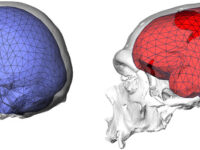Is time travel only possible in science fiction? Are humans capable of journeying to the past and into the future? Time travel may not be a concept exclusive to “Back to the Future.” According to scientists across several disciplines, time travel has a multitude of definitions. In fact, humans engage in several forms.
Firstly, all living creatures on Earth travel time at the same speed of one second per second. In the typical definition of time travel, the time-dilation effect of special relativity describes that a moving clock will appear to tick more slowly when approaching the speed of light. For example, one could travel for a distance of 60,000 light years in a spaceship accelerating constantly at 9.81 meters per second squared and return to Earth having aged only 40 years of time on the ship, while 60,000 years would have passed on Earth. This incredible phenomenon, however, is not the only way humans can travel time. When considering one’s personal history and future goals, humans engage in mental time travel — an ability that has played a major role in the development of language.
Mental time travel is based in the ability to recall conscious memory. Conscious memory involves explicit recall and can be separated into episodic and semantic memory. Basic knowledge falls under semantic memory, while personal experiences and autobiographical memories can be described as episodic. Episodic memory allows for mental time travel, creating the ability to journey through past events.
Does a dog recall burying a bone, or does it simply know where the bone is buried?
What is the specific purpose of episodic memory? Recalling past events typically results in many errors and distortions, indicating that the sole purpose of this ability must not be to record the past. Instead, researchers at the University of Queensland and the University of Auckland theorized that episodic memory provides information from the past to simulate future events. Through the combination of semantic and episodic recall, humans have the ability to reconstruct past events, consider future possibilities, or create fictional stories. This function may have evolved as a survival strategy, allowing for flexible foresight.
After vividly remembering a past event or imagining a version of the future, we are driven to communicate these ideas to others. Storytelling and the construction of literature, folklore, and television are based in the ability to create episodes driven by recall of personal memory. Researchers have also theorized that language developed as a means to communicate these ideas to others. Language is designed for expression of what will happen, including details on people, locations, and reasons. These are the same qualities that are needed for recalling episodic memory. Therefore, mental time travel is strongly connected with the evolution of language.
All languages accomplish the distinction of present or not present in different ways. For example, Chinese does not have tenses, but time is indicated through adverbs and aspect markers. The Pirahã language spoken by a group of several hundred people in Brazil has two tense-like morphemes. Morphemes refer to the most basic unit of language that cannot be further divided, and the Pirahã speakers indicate whether or not an event occurs in the present through small changes in these units.
Through its influence on language, mental time travel brings us closer together, sharing our dreams and stories as we journey through the many imagined versions of our lives.
Many animal researchers pose the question of whether or not mental time travel is exclusively a human ability; however, it is difficult to observe the difference between episodic and semantic memory in animals. For example, does a dog recall burying a bone, or does it simply know where the bone is buried? About a decade ago, we believed animals were not capable of episodic memory — scientists had decided that examples of presumed mental time travel were limited by a strong instinctual component of behavior in non-human species. More recently, Michael Corballis, a researcher of the evolution of language at the University of Auckland, described the behavioral evidence for mental time travel in many species, including great apes, meadow voles, ravens, scrub jays, and rats, as they were able to demonstrate recall of many different episodes over intervals of up to 45 minutes.
The demonstration of episodic memory in non-human animal species shows that mental time travel may have developed relatively far back in animal evolutionary history. Although technology has not developed to allow humans to time travel utilizing the effect of special relativity, the evolution of mental time travel allows us to relive our past and imagine our future. Through its influence on language, mental time travel brings us closer together, sharing our dreams and stories as we journey through the many imagined versions of our lives.
Image Source: Pixabay






